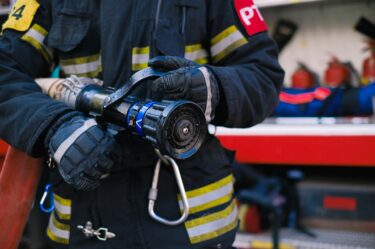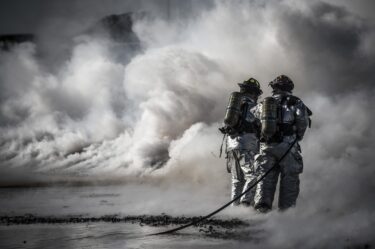Most health and safety provisions boil down to common sense, so why do so many workers take risks?
Despite all your risk assessments, PPE and disciplinary procedures, workplace safety still hinges on the behaviour of your employees. If workers act contrary to these guidelines designed to protect them, they are also placing themselves in danger.
So why do people take these risks?
Lack of training
The existence of a risk assessment is one thing, but having workers stick to it is another. A common cause of problems is that employees do not fully understand what the risk assessment says, or what it means for them.
You cannot expect workers to just “know” what is expected of them on site, or what a risk assessment says if they have never seen it. In fact, an effective risk assessment always includes provisions for training, so that employees know how to perform a task safely, and the correct way to behave while doing so.
Immature culture
Workplace banter is a great way to blow off some steam and to build strong teams. But taken too far and people can place themselves in danger.
The hard hat challenge and Construction Site Grand National may have been amusing to watch, but also carry an increased risk of injury or accident. Unfortunately, the fact that these videos went viral online means that workers across the country have been copying them, hoping to attain similar levels of “fame”.
Construction sites also tend to be the last bastion of workplace pranks, particularly at the expense of apprentices or “the new guy”. Fortunately, these tricks are far less dangerous than in years gone by – but the unpredictable reaction of the victim means that serious accidents can (and do) happen.
It is also worth noting that workplace pranks can land UK employers in court – an added incentive for increasing standards of behaviour on site.
Weak leadership
Safe behaviour needs to be modelled by management, and examples of poor practice need to be identified and called out. Where bad behaviour is ignored, management effectively condones it – which means that there is no incentive to improve standards or to stop engaging in unsafe behaviour.
Line managers, foremen and site managers need to be empowered to act quickly and decisively whenever poor behaviour is seen. You will also need robust disciplinary frameworks included in every employment contract, outlining what constitutes dangerous behaviour, and the sanctions that will be applied to employees who break the rules.
The role of management in health and safety incidents cannot be underestimated either. In his book Learning from accidents, Trevor Kletz complains, “Managers and designers, it seems, are either not human or do not make errors.” When investigating incidents, the focus is all too often on the end operator, neglecting the wider cultural factors – including management – that also play a part.
Wrong approach to awareness
Many organisations repeat the same mistake when trying to build a culture of responsible behaviour. Although education and awareness is important, these factors are only part of the story.
Researchers have found that “behavioural goal-setting” is far more effective to raising standards. Time and again, studies have shown that safety campaigns and safety training have little effect on raising behavioural standards.
Instead, your business needs to introduce a new system based around setting targets that raise standards. As each milestone is achieved, you can introduce a new target, tightening standards with each increment. You could also consider some kind of bonus or financial incentive to help keep employees focused.
Not just money
Critically, here in the UK, firms need to combine both training and targets if they want to change workplace behaviour. A study published in the Health & Safety Practitioner magazine revealed that British construction workers were immune to targets and training in isolation. Instead, researchers suggest that standards of behaviour are improved by increasing awareness and improving communications between management and the workforce.
After monitoring 19 construction sites, the researchers found that once baseline levels are set and displayed in a public place, management was extremely reluctant to let scores drop, effectively setting a minimum level of safety behaviour. This approach ensures that targets are set, employees are engaged, and management continues to apply the correct pressure and rewards to ensure behaviour does change – for the better.
These findings have since been confirmed. The research paper Fostering safe work behaviour in workers at construction sites concludes:
“Close and strict supervision, sending workers for safety and health training, and imposing fines are found to be most effective methods [for improving behaviour]. Positive reinforcements (both monetary and non‐monetary) have also been found to be effective”.
Improving standards of behaviour on a site is a complex challenge. As well as targets and training, your firm needs to develop a genuine desire for change led by senior management and implemented at every level of the business.
To learn more about what your business can do, and how to raise health and safety standards across all of your operations, please get in touch.
Sursa: Veritas Consulting




